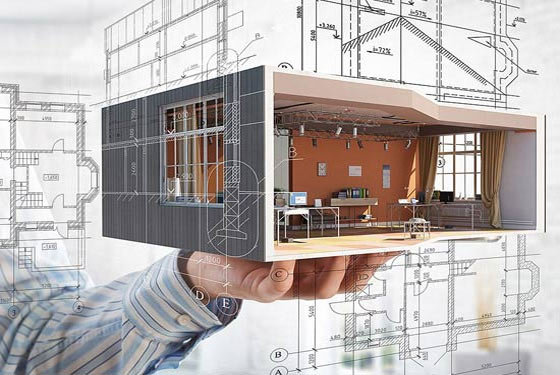BIM is used to provide digital representation of the building process in 3D with the scope of a 4D (time) and 5D (cost) of data to minimize errors, enhance effectiveness and decision-making.
With improved perceptibility and clarity throughout a project to ensure that things remain on the schedule that’s been dedicated to and within the calculated budget being proposed, BIM tools provide substantial ROI for architecture, engineering and construction (AEC) professionals.
Besides, base-level geometry of a structure, BIM comprises of spatial relationships; mechanical, electric and plumbing (MEP) components and the quantities and cost estimates for the required building materials. If any modification is made, associated objects are updated along with it, all in a centralized model so that each team member of the project can get access of that model.
BIM produces a broad, digital picture of a project to facilitate the project stakeholders to have clear view concerning what resources are essential and when, as well as reduce the chances of over- or under-estimating the time and money the project will require.
The objective of prefab and modular methods is to lessen the time required to fabricate a structure on the jobsite, as well as integrate MEP components into the panel or module while fabrication is going on. BIM contains these components in the entire building model and makes trade-to-trade coordination better.
In prefab and modular construction, assembly requirements are altered since the piece, panel or module design is calibrated. As soon as the design gets ready, BIM can generate visual-based manuals, in place of written instructions so that the workers can get a clear idea of the new steps for fabrication.
Building in the virtual space is incorporating the new technologies like virtual and augmented reality.
Virtual reality can offer an immersive understanding of the BIM model and a supplementary resource for AEC professionals to examine the design options and find out design errors.
AR facilitates to layer BIM models with real objects in the jobsite as a reference point during the assembly process and avoids the construction errors.
Source: constructiondive.com

~~~~~~~~~~~~~~~~~~~~~~~~
Published By
Rajib Dey
www.bimoutsourcing.com
~~~~~~~~~~~~~~~~~~~~~~~~
With improved perceptibility and clarity throughout a project to ensure that things remain on the schedule that’s been dedicated to and within the calculated budget being proposed, BIM tools provide substantial ROI for architecture, engineering and construction (AEC) professionals.
Besides, base-level geometry of a structure, BIM comprises of spatial relationships; mechanical, electric and plumbing (MEP) components and the quantities and cost estimates for the required building materials. If any modification is made, associated objects are updated along with it, all in a centralized model so that each team member of the project can get access of that model.
BIM produces a broad, digital picture of a project to facilitate the project stakeholders to have clear view concerning what resources are essential and when, as well as reduce the chances of over- or under-estimating the time and money the project will require.
The objective of prefab and modular methods is to lessen the time required to fabricate a structure on the jobsite, as well as integrate MEP components into the panel or module while fabrication is going on. BIM contains these components in the entire building model and makes trade-to-trade coordination better.
In prefab and modular construction, assembly requirements are altered since the piece, panel or module design is calibrated. As soon as the design gets ready, BIM can generate visual-based manuals, in place of written instructions so that the workers can get a clear idea of the new steps for fabrication.
Building in the virtual space is incorporating the new technologies like virtual and augmented reality.
Virtual reality can offer an immersive understanding of the BIM model and a supplementary resource for AEC professionals to examine the design options and find out design errors.
AR facilitates to layer BIM models with real objects in the jobsite as a reference point during the assembly process and avoids the construction errors.
Source: constructiondive.com

~~~~~~~~~~~~~~~~~~~~~~~~
Published By
Rajib Dey
www.bimoutsourcing.com
~~~~~~~~~~~~~~~~~~~~~~~~
No comments:
Post a Comment